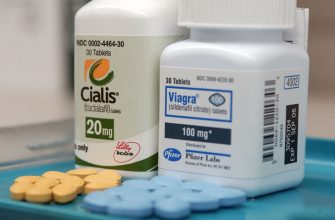Experiencing muscle or joint pain? Voveran Gel, containing diclofenac diethylammonium, offers targeted relief. Apply a pea-sized amount to the affected area, gently rubbing it in until fully absorbed. Avoid contact with eyes and open wounds.
This topical NSAID works by reducing inflammation and pain at the application site. Its gel form allows for direct delivery to the source of discomfort, potentially minimizing systemic side effects compared to oral medication. Always follow the prescribed dosage and duration of treatment; exceeding the recommended application amount won’t necessarily improve results and could increase the risk of irritation.
Remember to consult your doctor or pharmacist before using Voveran Gel, especially if you have pre-existing conditions like kidney or liver problems, or are taking other medications. They can assess your individual needs and advise on appropriate usage. While generally safe for topical application, potential side effects include skin irritation, redness, or itching. Discontinue use and seek medical advice if you experience any adverse reactions.
- Voveran Gel: A Detailed Guide
- Understanding Voveran Gel
- Common Questions and Answers
- Storage and Disposal
- What is Voveran Gel and What is it Used For?
- Active Ingredient and Mechanism of Action: How Does Voveran Gel Work?
- Dosage and Administration: Applying Voveran Gel Correctly
- Potential Side Effects and Precautions: Understanding Risks and Safety
- Common Side Effects
- Less Common but Serious Side Effects
- Precautions
- Specific Considerations
- Interactions with Other Medications: Important Considerations
- Non-Steroidal Anti-Inflammatory Drugs (NSAIDs)
- Blood Thinners
- Lithium
- Methotrexate
- Potassium-Sparing Diuretics
- Consult Your Doctor
- When to Consult a Doctor: Seeking Professional Advice
- Signs Requiring Immediate Medical Attention
- When to Schedule a Doctor’s Appointment
- Remember:
Voveran Gel: A Detailed Guide
Apply Voveran Gel (diclofenac diethylammonium) thinly to the affected area, rubbing gently until absorbed. Use only the prescribed amount; more isn’t better. Avoid contact with eyes and mucous membranes. Wash hands thoroughly after application.
Understanding Voveran Gel
Voveran Gel is a topical nonsteroidal anti-inflammatory drug (NSAID) that relieves pain and inflammation associated with musculoskeletal conditions like sprains, strains, and arthritis. It works by reducing the production of prostaglandins, chemicals that contribute to pain and swelling.
Common Questions and Answers
Q: How long does it take to work? A: You may feel relief within 15-30 minutes, but maximum effect might take a few hours. Consistent use is key.
Q: Can I use it with other medications? A: Check with your doctor or pharmacist, as interactions with certain medications are possible.
Q: What are the side effects? A: Skin irritation (redness, itching, burning) is common. Rarely, more serious reactions can occur. Stop use and consult a doctor if you experience any concerning symptoms.
Q: How long can I use it? A: Follow your doctor’s instructions; prolonged use isn’t always recommended.
Q: Is it suitable for everyone? A: No. Pregnant or breastfeeding women, individuals with known allergies to NSAIDs, and those with certain skin conditions should avoid use. Consult your doctor for appropriate advice.
Storage and Disposal
Store Voveran Gel at room temperature, away from direct sunlight and moisture. Dispose of any unused gel according to local regulations.
What is Voveran Gel and What is it Used For?
Voveran Gel contains diclofenac diethylammonium, a non-steroidal anti-inflammatory drug (NSAID). It’s a topical analgesic, meaning you apply it directly to your skin to relieve pain and inflammation.
Voveran Gel primarily targets localized musculoskeletal pain and inflammation. This includes conditions like:
| Condition | Description |
|---|---|
| Sprains | Injuries to ligaments |
| Strains | Injuries to muscles or tendons |
| Bruises | Areas of skin discoloration from trauma |
| Arthritis symptoms | Pain and swelling in joints, though not a cure for arthritis |
| Back pain | Pain localized to the back, often related to muscle strain or inflammation |
Always follow the instructions on the packaging regarding application and dosage. Consult your doctor or pharmacist if you have questions or experience adverse reactions. Remember, Voveran Gel is for external use only. Avoid contact with eyes and mucous membranes.
Active Ingredient and Mechanism of Action: How Does Voveran Gel Work?
Voveran Gel contains diclofenac diethylammonium as its active ingredient. This non-steroidal anti-inflammatory drug (NSAID) works by reducing inflammation and pain in your muscles and joints.
Diclofenac inhibits cyclooxygenase (COX) enzymes, COX-1 and COX-2. These enzymes produce prostaglandins, chemicals that contribute to inflammation, swelling, and pain. By blocking prostaglandin production, diclofenac relieves these symptoms.
The gel formulation allows for localized application, meaning diclofenac directly targets the affected area, minimizing systemic effects compared to oral NSAIDs. This targeted approach contributes to a potentially reduced risk of side effects affecting other parts of your body.
Remember, always follow your doctor’s instructions regarding dosage and application. If you experience any unusual side effects, discontinue use and consult your physician immediately. This information is for educational purposes only and does not constitute medical advice.
Dosage and Administration: Applying Voveran Gel Correctly
Always follow your doctor’s instructions. A typical dose involves applying a pea-sized amount of Voveran Gel to the affected area up to three times daily.
Gently massage the gel into the skin until fully absorbed. Avoid applying it to broken skin or open wounds. Wash your hands thoroughly after each application, unless you’re treating your hands.
Use only the prescribed amount. Applying more gel won’t necessarily speed up relief and could increase the risk of side effects.
If you forget a dose, apply it as soon as you remember, unless it’s nearly time for your next dose. Don’t double up on doses.
For optimal results, apply the gel regularly and consistently throughout the prescribed treatment period. Consult your doctor or pharmacist if you experience any unexpected side effects or if your pain doesn’t improve.
Potential Side Effects and Precautions: Understanding Risks and Safety
Always apply Voveran Gel as directed by your doctor or the product label. Do not exceed the recommended dosage.
Common Side Effects
- Burning or stinging sensation at the application site.
- Skin redness or rash.
- Itching.
- Mild swelling.
These effects are usually temporary and mild. If they persist or worsen, discontinue use and consult your doctor.
Less Common but Serious Side Effects
While rare, some individuals may experience more serious reactions. Seek immediate medical attention if you experience:
- Severe allergic reaction (difficulty breathing, swelling of the face, lips, or tongue).
- Large blisters or skin peeling.
- Widespread rash.
Precautions
- Avoid contact with eyes, mucous membranes, and open wounds.
- Wash your hands thoroughly after application.
- Do not use Voveran Gel on damaged skin.
- Inform your doctor about all medications you are currently taking, including over-the-counter drugs and herbal remedies, to avoid potential interactions.
- Pregnant or breastfeeding women should consult their doctor before using Voveran Gel.
- Keep out of reach of children.
Specific Considerations
Individuals with known allergies to diclofenac or other NSAIDs should exercise caution and consult their physician before using this medication. Long-term use may require regular monitoring by your doctor.
Interactions with Other Medications: Important Considerations
Always inform your doctor or pharmacist about all medications you are taking, including over-the-counter drugs, herbal remedies, and supplements, before starting Voveran Gel. This includes prescription and non-prescription pain relievers, blood thinners, and any medications affecting blood clotting.
Non-Steroidal Anti-Inflammatory Drugs (NSAIDs)
Combining Voveran Gel (diclofenac) with other NSAIDs, such as ibuprofen or naproxen, increases the risk of stomach ulcers and bleeding. Use caution and discuss this with your physician. Close monitoring of your gastrointestinal health is advised.
Blood Thinners
Voveran Gel, like other NSAIDs, can increase the risk of bleeding when taken with blood thinners (anticoagulants) such as warfarin or aspirin. Your doctor might need to adjust your dosage or monitor you closely. Report any unusual bruising or bleeding immediately.
Lithium
Concomitant use of Voveran Gel and lithium may elevate lithium levels in your blood, leading to toxicity. Regular monitoring of your lithium levels is necessary if you are using both medications. Your doctor will advise on appropriate monitoring schedules.
Methotrexate
Combining Voveran Gel with methotrexate can increase the risk of methotrexate toxicity. Your doctor will carefully weigh the benefits and risks before prescribing both medications together and likely will closely monitor your blood counts and kidney function.
Potassium-Sparing Diuretics
Voveran Gel can reduce the effectiveness of potassium-sparing diuretics. Your doctor might need to adjust your diuretic dosage or prescribe a different type.
Consult Your Doctor
This information is not exhaustive. Always consult your doctor or pharmacist before using Voveran Gel if you have any concerns or are taking other medications. They can help you assess potential interactions and ensure your safety.
When to Consult a Doctor: Seeking Professional Advice
Experience worsening pain despite using Voveran Gel for the recommended duration. Contact your doctor immediately.
Signs Requiring Immediate Medical Attention
- Severe allergic reaction: Symptoms include hives, swelling of the face, lips, tongue, or throat, and difficulty breathing.
- Increased pain intensity: If your pain significantly increases after applying Voveran Gel.
- New or worsening symptoms: Develop any new symptoms, such as fever, chills, or unusual skin reactions in the application area.
- Lack of improvement: Pain persists or worsens after seven days of consistent application.
Persistent skin irritation at the application site is another reason to seek medical advice. This might manifest as redness, itching, blistering, or scaling that doesn’t improve. Don’t hesitate to contact your healthcare provider.
When to Schedule a Doctor’s Appointment
- Moderate pain relief: Voveran Gel provides some relief, but the pain isn’t fully managed after a few days.
- Uncertainty about usage: You are unsure about the correct application method or dosage.
- Underlying conditions: You have existing medical conditions that might interact with Voveran Gel.
- Medication interactions: You are taking other medications that could potentially interact with Voveran Gel.
Remember:
This information is not a substitute for professional medical advice. Always consult your doctor or pharmacist for any concerns regarding your health or medication.





